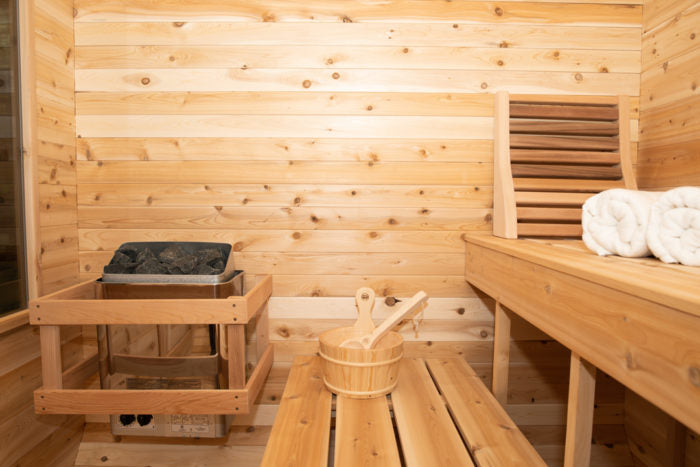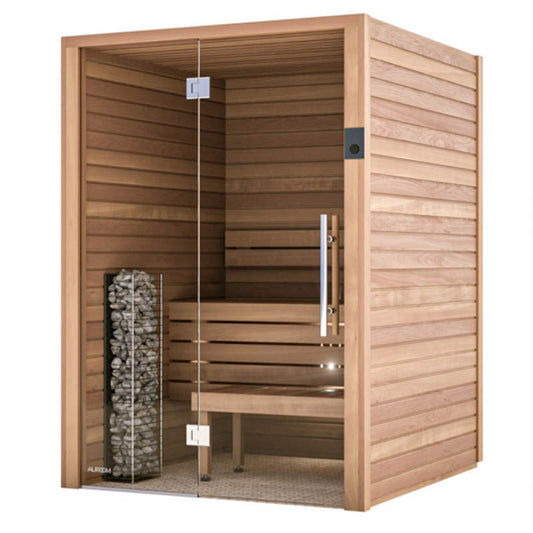The Buzz on Traditional Sauna
The Buzz on Traditional Sauna
Blog Article
Traditional Sauna - The Facts
Table of ContentsThe Single Strategy To Use For Traditional SaunaSome Known Factual Statements About Traditional Sauna Traditional Sauna Fundamentals Explained5 Simple Techniques For Traditional Sauna
A lot of the weight shed in a sauna is water loss and is re-gained upon rehydrating. However, without a doubt sauna can be a fundamental part of a healthy and balanced weight management program. To check out the distinctions in between typical and IR saunas, I will separate these right into proven, academic, and fabricated distinctions.Hence, the most popular factor in the saunawhich is at the ceiling directly over the sauna heateris generally in between 185 and 190 F. Traditional Sauna. Claims that a standard sauna surpasses 200 F is merely not true and not relevant for electric saunas offered in the US. The temperature level for a far-infrared sauna is usually established between 120 and 140 F; nevertheless, unlike the conventional sauna, the objective in and IR room is not to attain a heat
As a result of this, the temperature level distinction is practically unimportant, because excessive sweating results in both sauna types, yet the technique of warming the body is various. In an IR sauna the bather will certainly feel warm and will sweat a lot, but at much reduced temperature levels. Therefore, if the goal is to invest longer durations of time in the sauna, the IR sauna is a great selection.

An Unbiased View of Traditional Sauna
When the heat is attained, the aspects cycle on and off to maintain the high temperature. Most typical sauna users enjoy pouring water over the rocks to produce heavy steam to increase sauna moisture degrees. The advantages of pouring water over the rocks consist of: making the space more comfortable, dampening the nasal passages, and permitting the use of aromatherapy by mixing crucial oils with the water.
In a far-infrared sauna, the warm front pass through the body to successfully heat up the body and elevate the body core temperature level. To accomplish this boosted temperature level, Far-infrared emitters create infrared power which is close to the very same wavelength as that which the body normally emitsoften referred to as the "Crucial Variety" of 7 to 14 microns), so the energy is well obtained by the body.
When the power goes into the body, it creates the body temperature to raise and eventually causes sweat. In an infrared sauna it is essential for the emitters/heaters to remain on nearly frequently. Given that there is no mass of rocks to maintain warmth, the sauna will cool if the emitters shut off.
As stated over, the sauna bather in an infrared room wishes to place himself in front of running emitters to get optimal advantage from the warm. The heating time for both areas can be very different, depending on just how the areas are utilized. For a traditional sauna, a bather needs to allow 30-40 mins for the area to attain look these up a preferred temperature level and to correctly pre-heat the rocks.
Some Of Traditional Sauna
A well created sauna will typically achieve a temperature of 150-160 F in concerning 30-40 mins. For hotter temperature levels, the space might need to heat for a longer period.
To some, 15 minutes was "thrown away" while the infrared power heated the wood panels rather than warming a body, while others discover a pre-heated room to be more comfy and believe an elevated beginning temperature level is needed to begin perspiring. The size of suggested usage for each and every area is approximately the same (10-15 mins per session); however, as a result of the reduced air temperatures and the capability to really feel the effects of infrared warmth faster than a typical sauna, it is not unusual for a person to spend a total amount of 20-30 mins in an infrared sauna.
Typical saunas often tend to be larger (therefore make use of more electricity) than infrared try this site saunas, although traditional saunas are absolutely offered in one and two individual sizes. For a two-person standard sauna, 5x6 or 5x7 size is most popular. The top bench can easily seat two or 3 individuals and is also enough time to exist down during the sauna session.


The typical cost per kWH of electrical power in the U.S. is roughly $0.11, so a 4.5 kW heating system will certainly cost roughly $.50 to compete one hour, if the heating unit runs continually for one hour. Typically a sauna heating unit will compete 75% of the initial hour and 50% of succeeding hours on because the components cycle once the established temperature is attained.
The 10-Minute Rule for Traditional Sauna
A two person far-infrared area is typically physically smaller than a conventional sauna, often regarding 4' x 4' or smaller. The IR furnace is generally 1.5-1.7 kW utilizing a 120 volt 15 amp plug-in service. Because the space can be used earlier than a sauna area, we will certainly presume the area is made find more information use of for to of an hour consisting of warmth up time.
There is a hardly ever talked about difference in the social experience in between the two rooms. While our culture has lost a few of the social benefit of the standard sauna experience, it can be extremely socially rewarding. From family members time in the sauna, to heart-felt conversations with loved ones, to sauna partiesthe standard sauna experience can lead to intimate socializing.
The majority of higher end infrared spaces consist of tinted light treatment, audio systems and full-glass fronts.
Report this page